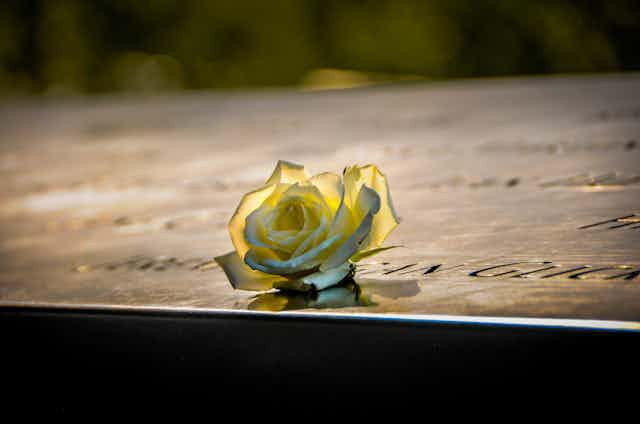From natural disasters to war, classical composers have long responded to traumatic events with their music, especially in the 20th century. The Danish composer Carl Nielsen composed Paraphrase on Nearer My God to Thee (1912) following the sinking of the Titanic. Two years later, a range of composers including Claude Debussy and Edward Elgar contributed to King Albert’s Book, a collection assembled by the Daily Telegraph in tribute to Albert I of Belgium, and the invasion of his country. Dmitri Shostakovich’s Symphony No. 11 (1957) depicts vividly the massacre of protestors during the failed 1905 Russian revolution.
But the attacks of September 11 in New York have probably generated the largest number of such works, which are undoubtedly varied in nature. A whole body of classical music has emerged that attempts in various ways to respond to the tragedy.
Musical responses to such events might seem worthy and reasonable endeavours. Some demonstrate the composers’ engagement with a wider world. Others give a musical voice to collective trauma and suffering or serve as a moving memorial to the victims of the tragedy.
However, there are those pieces that can be seen as a morbid form of musical “ambulance chasing”. Here, 9/11 has the potential to artificially lend a sense of importance to music whose wider merits become hitched to this horrible event, placing it beyond criticism.
A mixed bag of responses
On the Transmigration of Souls (2002) by the composer John Adams features the spoken names of victims, as well as repeated iterations, either spoken or sung, of the words or phrases including “missing”, “remember”, “We all love you” and “It was a beautiful day.” The musical content here is even more distinctive, foregrounding several simultaneous layers of music which convey a sense of the multiple dimensions of activity in New York City.
This type of perspective was earlier explored in a different manner by the composer Charles Ives, whose music conveyed the sense of heat in Central Park together with sounds of ragtime and other music from nearby venues in Central Park in the Dark (1906) - YouTube.
Adams does create a real tribute to a city beset by tragedy, presenting a deeply personalised response. This, however, sits in contrast to the rather hackneyed types of expression, evoking well-worn emotional tropes, in Eric Ewazen’s Hymn for the Lost and Livin (2001) or the exaggerated and somewhat banal sounds and gestures of Michael Gordon’s The Sad Park (2006), which can be reminiscent of a B-movie soundtrack.
Gordon’s work bears some relation to Steve Reich’s WTC 9/11 (2009-10) for string quartet and tape. Reich had earlier written a related piece, Different Trains also for string quartet and tape, which combined music with recordings of individuals speaking of a train journey - including those in Europe to concentration camps.
WTC 9/11 features recordings of those who were in Manhattan on the day, as well as of individuals from the North American Aerospace Defence Command and New York Fire Department. The musical component resembles other pieces of Reich’s work of the period – repetitive, with driving momentum and characteristically stylised harmonies. However, this piece features a degree of interaction between the instruments and the spoken material, as had been the case in Different Trains.
There is little doubt that the piece communicates a sense of urgency (though this could be said of many other Reich works). But I find it difficult to see what the work reveals about 9/11 which is not already obvious to anyone who watched the events on TV. Nor does it embody any particularly striking emotional reaction.
Proper motivations
I have questioned before whether certain works explicitly thematising traumatic events amount to a meaningful response. They could be criticised for rendering the trauma aesthetic. This has the potential, as cultural theorist Theodor Adorno warned in response to art after the Holocaust, of enabling people to derive pleasure from it, and that can be heinous.
I would not wish to argue that composers, or other artists, should refrain from engaging with such events, nor that there have not been immensely successful works of this type.
Debussy, Shostakovich, Adams and others succeed in creating music that embodies both a very personal response and an individual perspective, which could be said to contribute to knowledge and understanding. But some composers might ask themselves questions about their motivations.
Are they simply jumping on a “bandwagon”, exploiting a very real and horrible event for personal gain and success? Are they engaging in a sort of musical virtue-signalling which is a convenient alternative to the messy business of real political activism?
Is composing a piece of music linked to 9/11 a straightforward means of evoking a type of uncomplicated emotional reaction? Is this disaster a safe “hook” to hang any vaguely sad or lamenting music that actually has nothing to do with the event?
If so, one might ask whether the merits of some such works are as clear-cut as might often be assumed. Art must be thoughtful and sadly many of the classical music responses to 9/11 have not been.

